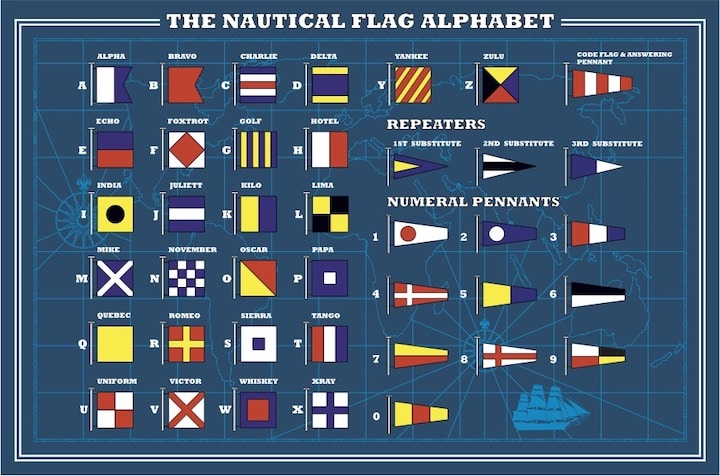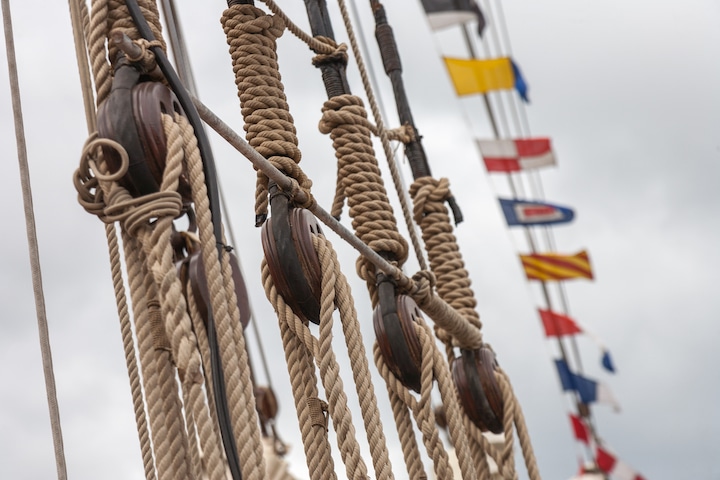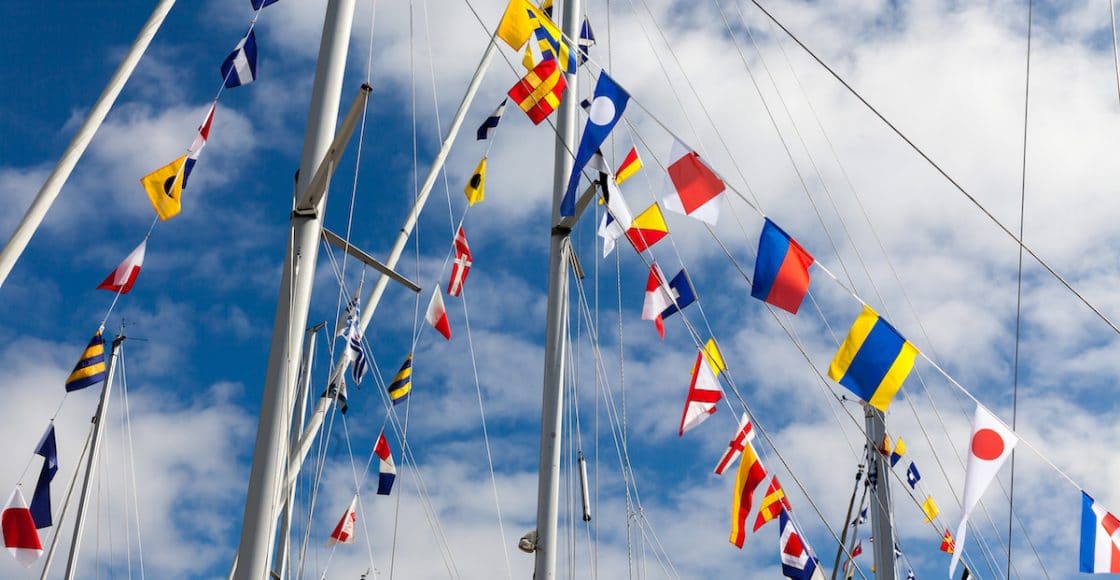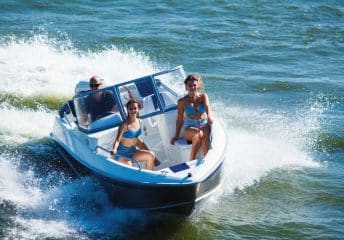Understanding the Nautical Flags, Sailing Flags, & the Nautical Alphabet
Last Updated on June 9, 2023 by Boatsetter Team
Just as the marine electronics and lights on a boat help you communicate with your fellow cruisers, nautical flags and sailing flags are a language of sorts, too. They help alert others to maneuvers you’re making, for example, or an emergency. In certain combinations, they warn of bad weather. It all depends upon which flag—or flags—you see.
Here’s how to make sense of the nautical flag alphabet. This way, you understand the situation at hand when you’re next out on the water.
Explore Powerboat & Sailboat Rentals Near You
6 Tips for Identifying Nautical Flags
1. Pay attention to the flag’s shape.
Most nautical flags are squares. Additionally, you’ll find some resembling triangles but with flat tips—a.k.a. pendants. These two shapes are the most common.

2. Learn the nautical flag alphabet.
Conveniently, for every letter of the alphabet, there’s an equivalent square nautical flag. Well, more accurately, each flag represents international code words like Alpha, Bravo, Charlie, etc., which correspond to alphabetical letters. The full list and their meanings:
- A – Alpha – diver down; keep clear
- B – Bravo – carrying dangerous cargo
- C – Charlie – affirmative (yes)
- D – Delta – keep clear, I am maneuvering with difficulty
- E – Echo – altering course to starboard
- F – Foxtrot – I am disabled, communicate with me
- G – Golf – I want a pilot
- H – Hotel – a pilot is onboard
- I – India – I am altering my course to port
- J – Juliet – vessel on fire, keep clear
- K – Kilo – I want to communicate with you
- L – Lima – stop your vessel instantly, I have something important to communicate
- M – Mike – my vessel is stopped and making no way through the water
- N – November – negative (no)
- O – Oscar – man overboard
- P – Papa – about to sail (when flown in port; at sea, fishing vessels use it to mean their nets are caught on an obstruction)
- Q – Quebec – I request free pratique (clearance to enter port due to no disease onboard)
- R – Romeo – reverse course
- S – Sierra – engines are going astern
- T – Tango – keep clear, I am engaged in trawling (if a fishing vessel; if a naval ship is flying this flag, it means do not pass ahead)
- U – Uniform – you are heading into danger
- V – Victor – I require assistance
- W – Whiskey – I require medical assistance
- X – X-ray – stop your intention
- Y – Yankee – I am dragging anchor
- Z – Zulu – I require a tug
3. Remember that the numbers on nautical flags have meanings, too.
When it comes to numbers, boaters use pendants. Ten different pendants represent the numbers zero through nine. A combination of flags denotes the numbers 10 and up.
4. Consider the color of the flag.
Nautical flags only use five colors:
- Black
- Blue
- Red
- White
- Yellow
Not coincidentally, each of these stands out against the sky, easily seen through binoculars or with the naked eye. You might see a solid-color flag or one with a combination of colors. For example, two red pendants means there’s a small-craft advisory.

5. Tally the total.
Boats can fly up to seven flags in a row to convey certain messages.
- Solo flags are the previously mentioned international code words (Alpha for diver down, for instance).
- Two nautical flags flown together typically indicate distress or a maneuvering problem. A good example: Oscar and Whiskey flown together mean someone fell overboard and needs medical assistance.
- Three-flag signals can mean the points of the compass, among other things. Four-flag signals are ship names, while five are time and position. Six-flag signals indicate latitude and longitude, while seven mean longitude with more than 100 degrees.
6. Keep in mind that special languages exist.
Sometimes, the nautical flag alphabet is unique to certain situations. Regattas assign different meanings to a few flags, so that racers understand what’s happening. NATO and even the U.S. Navy do, too, with only their personnel knowing the meanings.
Ready to hit the water? Browse local boat rentals near you.

A journalist with more than 30 years’ experience, Diane M. Byrne is the owner
of MegayachtNews.com, a daily website educating American superyacht owners, buyers, and
their circles of influence about the leading builders, designers, cruising destinations, and more.
She founded the website in 2007 as the first, and still the only, American-focused online media
outlet exclusively covering this market. It features all-original content, for real stories of real
interest.
Diane is additionally one of the most-sought-after journalists for expert editorial coverage and
commentary about not only superyachts, but also general boating and yachting. Her byline
appears in Boatsetter.com, DiscoverBoating.com, and the magazines Luxury Guide, Ocean,
Yachting, and Yachts International.
Additionally, Diane is the Chair of the U.S. Superyacht Association, having been on the Board of
Directors since 2015. Outside of yachting, she’s a trustee of Sempre Avanti, a non-profit
resource supporting Italian and Italian-American individuals, businesses, and organizations in the
United States and Italy.










